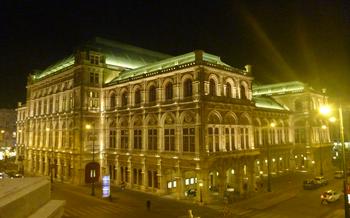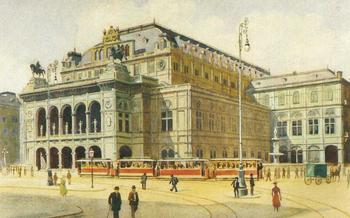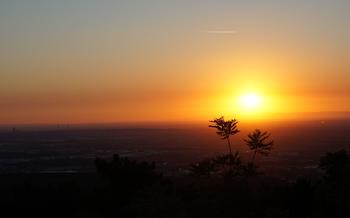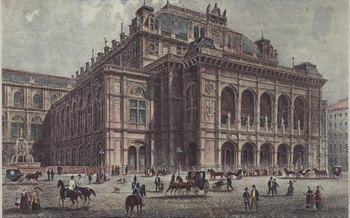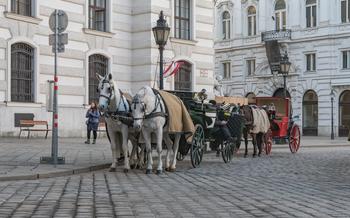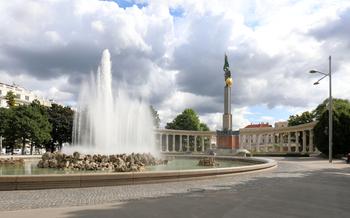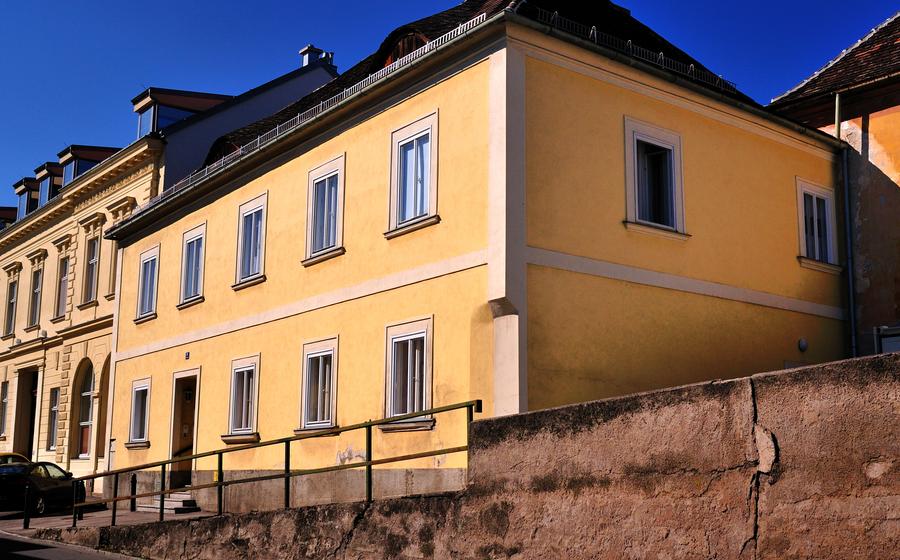
Vienna State Opera House
- Vienna State Opera House: A Masterpiece of Architecture and Performance
- Exploring the History of the Vienna State Opera House
- Attending a Performance at the Vienna State Opera House
- Vienna State Opera House Tours
- Vienna State Opera House Museum
- Vienna State Opera House Orchestra and Chorus:
- Famous Opera Singers Who Performed at the Vienna State Opera House:
- Vienna State Opera House Ball: A Night of Elegance and Enchantment
- Vienna State Opera House for Families
- Vienna State Opera House and Its Role in the Viennese Cultural Scene
- Controversies and Challenges Faced by the Vienna State Opera House
- Vienna State Opera House in Popular Culture
- Architectural Elements and Design Features of the Vienna State Opera House
- Restoration and Conservation Efforts at the Vienna State Opera House
- Insider Tip
Vienna State Opera House: A Masterpiece of Architecture and Performance
In the heart of Vienna, a city renowned for its cultural heritage, stands the Vienna State Opera House, a masterpiece of architecture and performance. This iconic venue, inaugurated in 1869, has witnessed over 150 years of operatic history, showcasing world-renowned performances and attracting music enthusiasts from around the globe.
The building itself is a testament to the grandeur and elegance of the 19th century. Designed by architects August Sicard von Sicardsburg and Eduard van der Nüll, the opera house features a majestic neo-Renaissance facade adorned with intricate sculptures and opulent decorations. The interior is equally impressive, boasting a grand staircase, a stunning auditorium with plush red velvet seats, and a magnificent chandelier that illuminates the space with its glittering crystals.
Beyond its architectural beauty, the Vienna State Opera House is renowned for its world-class performances. The opera company boasts a talented ensemble of singers, musicians, and dancers, who bring to life a diverse repertoire ranging from classical masterpieces to contemporary works. Whether you are a seasoned opera enthusiast or a newcomer to the genre, the Vienna State Opera House promises an unforgettable experience.
Exploring the History of the Vienna State Opera House
The Vienna State Opera House, a symbol of artistic excellence and architectural grandeur, has a rich history that spans over 150 years. Its origins can be traced back to the mid-19th century when Emperor Franz Joseph I commissioned the construction of a new opera house to replace the outdated Kärntnertortheater. The renowned architects August Sicard von Sicardsburg and Eduard van der Nüll were entrusted with the task of designing the new opera house, and their vision resulted in a masterpiece that combined classical and Renaissance elements.
The opera house opened its doors in 1869 with a performance of Mozart's Don Giovanni, marking the beginning of a glorious era in Viennese opera. However, tragedy struck in 1897 when a fire ravaged the building, destroying much of its interior. The opera house was painstakingly reconstructed under the direction of architects Ferdinand Fellner and Hermann Helmer, who retained the original facade while incorporating Art Nouveau elements into the interior design.
The Vienna State Opera House played a pivotal role in the cultural and political life of Vienna throughout the 20th century. It survived the turbulent years of World War II, during which it was damaged but not destroyed. After the war, the opera house underwent extensive renovations and reopened in 1955, becoming a symbol of Vienna's resilience and cultural rebirth.
Today, the Vienna State Opera House stands as a testament to the city's rich musical heritage and continues to be one of the most prestigious opera houses in the world. Its historical significance, architectural beauty, and world-class performances make it a must-visit destination for opera enthusiasts and travelers alike.
Attending a Performance at the Vienna State Opera House
Attending a performance at the Vienna State Opera House is an experience that combines artistic excellence with a rich cultural atmosphere. Here are some tips to make the most of your visit:
- Booking Tickets: Tickets can be purchased online, by phone, or at the box office. Advance booking is recommended to secure the best seats.
- Choosing Seats: The opera house offers a variety of seating options, from affordable standing room tickets to luxurious private boxes. The best seats provide an unobstructed view of the stage and excellent acoustics.
- Dress Code: While there is no strict dress code, formal attire is customary for evening performances. Smart casual attire is acceptable for matinee performances.
- Etiquette: During the performance, it is considered proper etiquette to remain silent and refrain from talking or making noise. Applause is typically reserved for the end of each act or aria.
- Structure of an Opera: Operas typically consist of multiple acts, separated by intermissions. The duration of an opera can vary from two to four hours.
- Language: Most operas are performed in their original language, with surtitles projected above the stage for non-German speakers.
Vienna State Opera House Tours
The Vienna State Opera House offers guided tours, providing an immersive experience that takes visitors behind the scenes of this iconic venue. These tours are available multiple times a day, in various languages, and can be booked in advance or on-site. During the tour, visitors will be guided through the opera house's grand public spaces, including the main auditorium, the State Box, and the Marble Staircase. They will also get a glimpse into the backstage areas, such as the rehearsal rooms, the costume department, and the workshops where sets and props are created.
The tour highlights include fascinating historical anecdotes, insights into the daily operations of the opera house, and the chance to see up close the intricate details of the building's architecture and design. The duration of the tour is approximately 45 minutes to an hour, and the cost varies depending on the language and group size. It is recommended to book the tour in advance, especially during peak tourist season, to secure a spot. The best time to visit the Vienna State Opera House for a tour is during the morning or early afternoon, when there are fewer crowds and the atmosphere is more relaxed.
Vienna State Opera House Museum
The Vienna State Opera House Museum is a treasure trove of operatic history, offering a fascinating glimpse into the world behind the scenes. Through interactive exhibits and multimedia presentations, visitors can delve into the rich heritage of the opera house and its legendary performers. The museum showcases an impressive collection of costumes, artifacts, and memorabilia from past productions, providing a tangible connection to the magic of the opera world. From intricate gowns worn by prima donnas to original set designs, the exhibits offer a unique perspective on the artistry and craftsmanship that bring opera to life. Whether you are a seasoned opera enthusiast or simply curious about the history and culture of this iconic institution, the Vienna State Opera House Museum is a must-visit destination.
Practical Information: - Admission fees: Adults: €12, Students: €9, Children under 12: Free - Hours of operation: Tuesday-Sunday, 10am-4pm (closed on Mondays) - Accessibility: The museum is wheelchair accessible, with ramps and elevators available throughout the building.
Vienna State Opera House Orchestra and Chorus:
The Vienna State Opera Orchestra and Chorus are renowned worldwide for their exceptional musicianship and vocal prowess. Comprised of over 150 highly skilled musicians, the orchestra is led by renowned conductors who shape the musical direction of performances. The chorus, with its powerful and versatile voices, adds depth and richness to the operatic experience.
The collaboration between the orchestra, chorus, and soloists on stage creates a synergy that elevates every performance. The orchestra's precise articulation, dynamic range, and expressive playing bring the music to life, while the chorus provides a harmonious and nuanced backdrop. Together, they create an immersive and unforgettable auditory experience for the audience.
The Vienna State Opera Orchestra has a rich history dating back to the early 19th century, and it has played a pivotal role in shaping the development of Viennese opera. Many legendary conductors, including Gustav Mahler, Richard Strauss, and Herbert von Karajan, have led the orchestra, leaving an indelible mark on its musical legacy.
The Vienna State Opera Chorus, established in 1922, has also earned international acclaim for its vocal artistry. Its members are carefully selected for their exceptional vocal abilities, and they undergo rigorous training to maintain the highest standards of performance.
Together, the Vienna State Opera Orchestra and Chorus form the backbone of the opera house's success and prestige. Their dedication, talent, and passion for music contribute to the unforgettable experiences that the Vienna State Opera offers to audiences worldwide.
Famous Opera Singers Who Performed at the Vienna State Opera House:
The Vienna State Opera House has witnessed performances by some of the most renowned opera singers in history, who left an indelible mark on the world of opera. These legendary artists graced the stage with their extraordinary voices, captivating audiences with their talent and artistry.
The list of famous opera singers who performed at the Vienna State Opera is extensive and includes names like Enrico Caruso, a legendary Italian tenor known for his powerful voice and dramatic performances. Caruso's performances at the Vienna State Opera were highly anticipated, and he was adored by opera enthusiasts for his charismatic stage presence and unforgettable interpretations of iconic roles.
Another notable singer was Maria Callas, an American-born soprano renowned for her exceptional vocal range and dramatic intensity. Callas' performances at the Vienna State Opera were characterized by her ability to convey deep emotions and her unparalleled technical skills. Her portrayal of Norma, Tosca, and Violetta in Verdi's operas remains etched in the memories of opera lovers worldwide.
Among the prominent Austrian singers, we have to mention Elisabeth Schwarzkopf, a soprano known for her exquisite vocal control and elegant stage presence. Schwarzkopf's performances at the Vienna State Opera were marked by her interpretations of Mozart and Strauss operas, where her silvery voice and refined musicianship shone brilliantly.
These are just a few examples of the many legendary opera singers who graced the stage of the Vienna State Opera House. Their performances contributed to the opera house's reputation as a leading venue for world-class opera, attracting audiences from around the globe to witness the magic of their artistry.
Vienna State Opera House Ball: A Night of Elegance and Enchantment
The Vienna State Opera House Ball, also known as the Opernball, is an annual highlight of Vienna's social and cultural calendar. This prestigious event, steeped in tradition and glamour, dates back to 1877 and has become a symbol of Viennese elegance and sophistication.
Held in the grand setting of the Vienna State Opera House, the ball offers a magical evening of music, dance, and social interactions. The highlight of the ball is the spectacular opening ceremony, featuring a grand polonaise performed by debutantes and members of the Vienna State Ballet.
Guests attending the ball are expected to adhere to a strict dress code, with formal attire and floor-length gowns being the norm. The ball provides a platform for Viennese society to showcase their finest attire and engage in lively waltzes, polkas, and quadrilles.
Attending the Vienna State Opera Ball is a truly unforgettable experience. However, tickets are highly sought after and can be difficult to obtain. Patience and early planning are essential, as tickets tend to sell out quickly. If you're fortunate enough to secure tickets, be prepared for an evening of enchantment, where the elegance of the 19th century meets the vibrant energy of contemporary Vienna.
Vienna State Opera House for Families
The Vienna State Opera House offers a range of performances, workshops, and educational programs tailored specifically for children and families. These events aim to introduce young audiences to the world of opera in an engaging and interactive way.
Interactive activities, such as storytelling sessions, backstage tours, and hands-on workshops, help bring opera to life for children. These activities allow them to explore the different aspects of opera, from the music and costumes to the sets and characters.
To make the opera experience more enjoyable for families, the Vienna State Opera House provides family-friendly seating options and discounts. These options include special seating areas designed for families with young children, as well as discounted tickets for children and accompanying adults.
By offering these family-friendly programs and initiatives, the Vienna State Opera House plays a vital role in nurturing the next generation of opera enthusiasts. It provides children with a unique opportunity to experience the magic of opera and develop a lifelong appreciation for this art form.
Vienna State Opera House and Its Role in the Viennese Cultural Scene
The Vienna State Opera House is inextricably linked to the cultural identity and reputation of Vienna. It is not just a venue for world-class performances but also a symbol of the city's rich cultural heritage. The opera house has played a pivotal role in shaping Vienna's reputation as a cultural capital and a global center for music and performing arts.
Since its inception, the Vienna State Opera House has been a magnet for talented artists and musicians from around the world. Its performances have attracted audiences from all walks of life, including royalty, dignitaries, and celebrities. The opera house has become a meeting point for people from different cultures and backgrounds, fostering a sense of community and shared appreciation for the arts.
The Vienna State Opera also collaborates with other cultural institutions and festivals in the city, contributing to Vienna's vibrant cultural scene. It is a key player in the annual Vienna Festival, one of the most prestigious arts festivals in the world, showcasing a diverse range of performances, including opera, theater, music, and dance.
The opera house's presence has a significant impact on Vienna's economy. It attracts tourists from around the world, generating revenue for the city. The opera house also supports local businesses, such as restaurants, hotels, and shops, which benefit from the influx of visitors.
In recognition of its outstanding contributions to the arts, the Vienna State Opera House has received numerous awards and accolades. In 2010, it was designated a UNESCO World Heritage Site, acknowledging its historical and cultural significance. The opera house has also been honored with the Austrian State Prize for Music and the Golden Medal of Honor for Services to the Republic of Austria.
Controversies and Challenges Faced by the Vienna State Opera House
Throughout its illustrious history, the Vienna State Opera House has encountered controversies and challenges that have shaped its identity and evolution.Artistic debates have arisen over the interpretation of classic works and the commissioning of modern productions, leading to discussions about the balance between tradition and innovation.The opera house has also faced financial constraints, requiring careful management and fundraising efforts to maintain its world-class productions and facilities.Balancing the demands of a changing audience, the preservation of cultural heritage and the need for financial sustainability remains an ongoing challenge for the institution.In recent years, the Vienna State Opera has also navigated the complexities of addressing contemporary societal issues through its productions, sparking discussions about the role of opera in reflecting and responding to the modern world.Despite these challenges, the Vienna State Opera House remains a beacon of artistic excellence, constantly striving to maintain its position as one of the world's leading opera houses while embracing change and adapting to the evolving landscape of the performing arts.
Vienna State Opera House in Popular Culture
The Vienna State Opera House has been immortalized in popular culture through its appearances in films, television shows, and literature. Its iconic status has made it a recognizable symbol of Vienna and opera worldwide.
In the realm of cinema, the opera house has served as a backdrop for numerous films, including "The Third Man" (1949), "Before Sunrise" (1995), and "Mission: Impossible - Rogue Nation" (2015). These cinematic portrayals have captured the grandeur and allure of the opera house, showcasing its opulent interiors and world-class performances.
On the small screen, the Vienna State Opera House has graced the sets of popular television shows such as "The Crown" (2016) and "Mozart in the Jungle" (2014-2018). These shows have brought the opera house's rich history and vibrant atmosphere to a global audience, highlighting its cultural significance and universal appeal.
In the world of literature, the Vienna State Opera House has been immortalized in the works of renowned authors. Stefan Zweig's novella "Letter from an Unknown Woman" (1922) features a poignant scene set in the opera house, capturing the essence of love, loss, and the transformative power of music. Similarly, Graham Greene's classic novel "The Third Man" (1949) vividly describes the opera house's grandeur and its role in the city's postwar reconstruction.
These cultural references and allusions to the Vienna State Opera House have cemented its place in the collective imagination. The opera house has become a symbol of artistic excellence, cultural heritage, and the enduring allure of opera.
Architectural Elements and Design Features of the Vienna State Opera House
The Vienna State Opera House stands as a masterpiece of architectural design, blending various historical influences and showcasing unique features that set it apart. Inspired by the Italian Renaissance Revival style, the building's facade features intricate carvings, sculptures, and decorative elements that captivate the eye. Its grand entrance, adorned with columns and arches, welcomes visitors into a world of opulence and grandeur.
Inside, the opera house boasts a horseshoe-shaped auditorium, a design that ensures excellent acoustics and sightlines for every seat. The auditorium's ceiling is a work of art in itself, adorned with a stunning fresco by the renowned Austrian painter Moritz von Schwind, depicting scenes from Greek mythology and the history of music.
The opera house's interior is a harmonious blend of luxury and functionality. Rich red velvet upholstery, gleaming gold accents, and intricate crystal chandeliers create a regal atmosphere. The grand staircase, adorned with ornate balustrades and sculptures, adds to the building's regal charm.
The Vienna State Opera House also incorporates technical innovations that were groundbreaking for its time. Its stage machinery, designed by the renowned stage engineer Karl Lautenschläger, allows for seamless set changes and elaborate special effects, enhancing the overall performance experience.
Every architectural element and design feature of the Vienna State Opera House contributes to its unique character and reputation as one of the world's most iconic opera houses. It is a testament to the skill and artistry of the architects, designers, and craftsmen who brought this architectural masterpiece to life.
Restoration and Conservation Efforts at the Vienna State Opera House
The Vienna State Opera House is a historical and architectural jewel that requires ongoing preservation and maintenance. Over the years, the opera house has undergone several restoration and conservation projects to ensure its integrity and longevity. These projects present unique challenges, as they aim to balance the need for modernization with respect for the original design.
One of the most significant restoration projects was undertaken after World War II, when the opera house was heavily damaged by bombing. The reconstruction, which took place from 1945 to 1955, involved rebuilding the auditorium, stage, and technical facilities while maintaining the original architectural features. The result was a faithful recreation of the original opera house, preserving its historical and cultural significance.
More recently, the opera house underwent a major renovation project between 2010 and 201This project focused on modernizing the technical infrastructure, improving accessibility, and restoring the building's facade. The renovation also included the installation of a new lighting system, enhanced acoustics, and a state-of-the-art stage machinery.
Throughout these restoration and conservation efforts, the Vienna State Opera House has been able to maintain its architectural integrity while adapting to the changing needs of modern opera productions. The success of these projects is a testament to the commitment to preserving this cultural landmark for future generations.
Insider Tip
For the best experience, visit the Vienna State Opera House during its peak season, which runs from September to June. This is when the opera house presents its most prestigious productions and features renowned artists from around the world.
To find affordable tickets, consider booking in advance or opting for standing-room tickets, which offer a great view of the stage at a reduced price. Discounts are often available for students, seniors, and groups.
Before or after the performance, take advantage of the opportunity to explore the surrounding area. The opera house is conveniently located near the Ringstrasse, a beautiful boulevard lined with historic buildings, museums, and cafes. You can also visit the nearby Volksgarten, a charming park with a rose garden and a playground.
My personal tip: If you're a fan of opera, don't miss the chance to attend a performance at the Vienna State Opera House. It's a truly unforgettable experience that will leave you with lasting memories.
